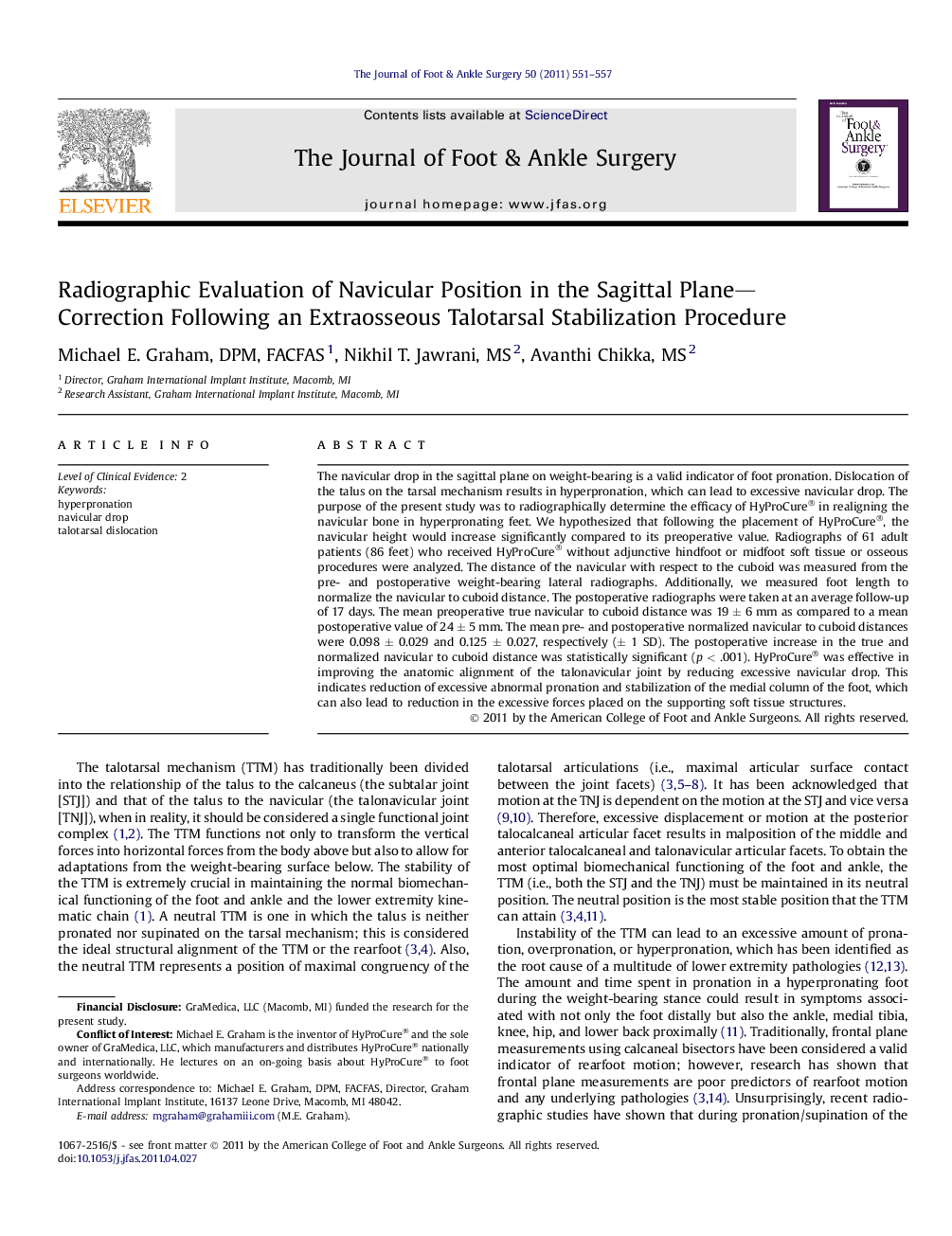| Article ID | Journal | Published Year | Pages | File Type |
|---|---|---|---|---|
| 2720202 | The Journal of Foot and Ankle Surgery | 2011 | 7 Pages |
The navicular drop in the sagittal plane on weight-bearing is a valid indicator of foot pronation. Dislocation of the talus on the tarsal mechanism results in hyperpronation, which can lead to excessive navicular drop. The purpose of the present study was to radiographically determine the efficacy of HyProCure® in realigning the navicular bone in hyperpronating feet. We hypothesized that following the placement of HyProCure®, the navicular height would increase significantly compared to its preoperative value. Radiographs of 61 adult patients (86 feet) who received HyProCure® without adjunctive hindfoot or midfoot soft tissue or osseous procedures were analyzed. The distance of the navicular with respect to the cuboid was measured from the pre- and postoperative weight-bearing lateral radiographs. Additionally, we measured foot length to normalize the navicular to cuboid distance. The postoperative radiographs were taken at an average follow-up of 17 days. The mean preoperative true navicular to cuboid distance was 19 ± 6 mm as compared to a mean postoperative value of 24 ± 5 mm. The mean pre- and postoperative normalized navicular to cuboid distances were 0.098 ± 0.029 and 0.125 ± 0.027, respectively (± 1 SD). The postoperative increase in the true and normalized navicular to cuboid distance was statistically significant (p < .001). HyProCure® was effective in improving the anatomic alignment of the talonavicular joint by reducing excessive navicular drop. This indicates reduction of excessive abnormal pronation and stabilization of the medial column of the foot, which can also lead to reduction in the excessive forces placed on the supporting soft tissue structures.
